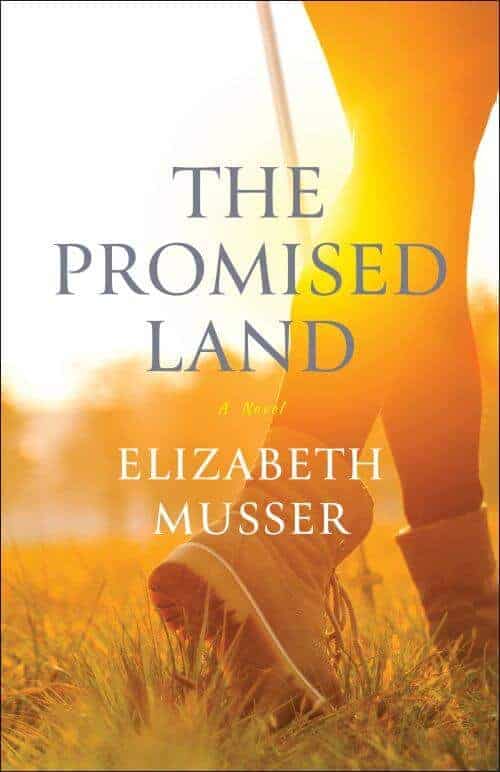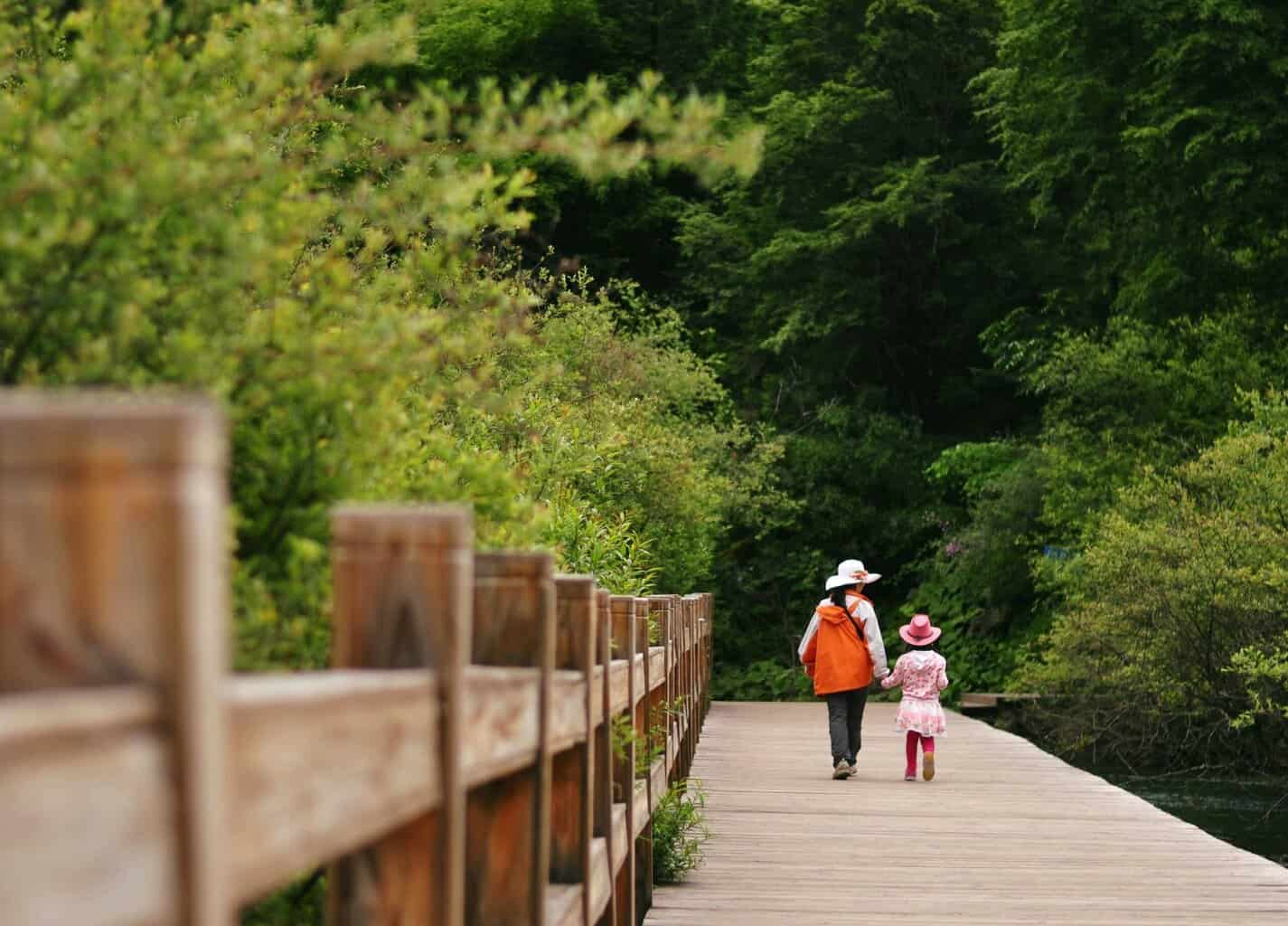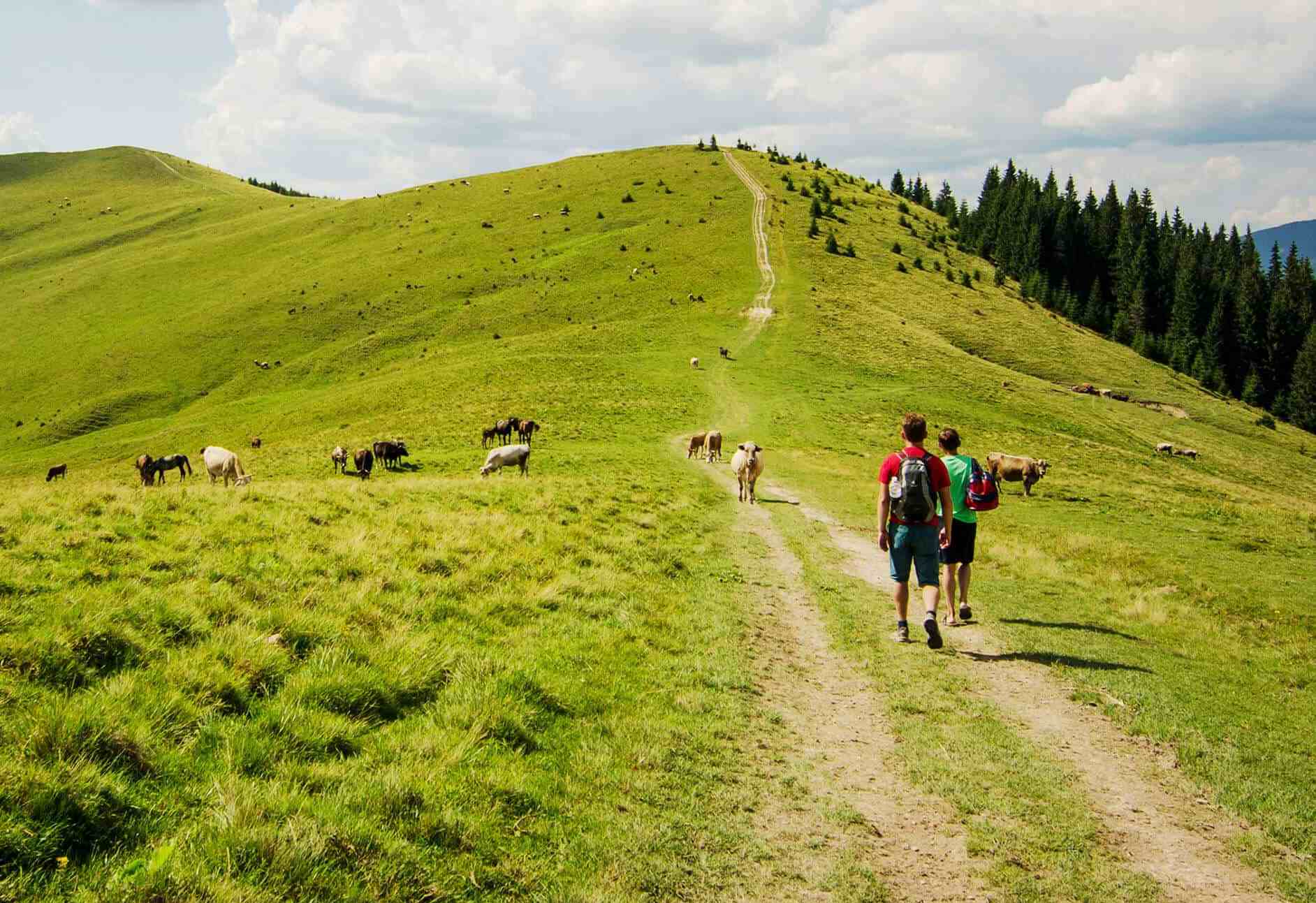The Camino de Santiago inspires many beautiful stories, whether they be guide books, history books, biographies, or in Elizabeth Musser’s case – wonderful works of fiction. Elizabeth’s book, The Promised Land, is a wonderful tale of souls coming together on the Camino. Each person starts on the Camino for a different reason, and, just like in life, they find more than they expected.
Elizabeth took some time to tell us more about her personal connection to Le Puy Camino, her spiritual connection to pilgrimage, and to share a snippet of her book.
How did you hear about the Camino?
Bonjour, dear Caitlin! Thanks so much for having me as a guest on your blog.
Ten years ago, the president of One Collective, the faith-based organization we’ve been serving with for over 35 years, asked Paul and me to become “Pastors to Workers”, providing pastoral care to our colleagues who serve in Europe and beyond. Quite a change from our work in French churches.
On one of the first pastoral care visits, we met a team of young people working hard to open a ministry center for pilgrims walking the Camino. Over the years we have visited these colleagues and watched with joy as Pilgrim House became a reality: a place at the end of the Camino in Santiago, Spain where pilgrims can relax and process the journey they’ve been on with Christians who welcome them no matter their faith journey. You can find more about Pilgrim House at www.pilgrimhousesantiago.com
As I learned about the Camino, an idea for my novel, The Promised Land was born.
What is your book, The Promised Land, about?
The Promised Land is about pilgrimage. Here’s a brief description of the novel:
You’d be surprised at what gets through when everything else is taken away.
Abbie Jowett has always had every detail perfectly planned out, including her husband’s upcoming surprise fiftieth birthday party. But when he surprises her instead with news that he’s leaving, she feels her life unraveling. Already distressed by her son Bobby’s determination to take a gap year in Europe in addition to her father’s failing health, Abbie is immobilized by grief.
Bobby Jowett has dared to take a gap year to really think about his future. His first stop is volunteering at a refugee centre in Austria where he meets a beautiful Iranian girl name Rasa. For idealistic Bobby, it is love at first sight. On the spur of the moment, he invites her to join him in hiking the famed French Camino. But his mother, out of desperation, has also chosen to follow him to France.
Caroline Lefort, a young photojournalist, is writing an article about pilgrims on the Camino. However, she has been like a wandering pilgrim herself for the past ten years, having abandoned her family after a devastating event.
As the lives of these people intersect, they find that the Camino strips them bare, calling each one into deep soul-searching. Against all odds, can they find themselves again?
“The Promised Land is a captivating tale of pilgrimage, not only along the rigorous way of the Camino but also through an equally rigorous exploration of the soul… Musser expertly navigates the complex landscape of loss while pointing the way to redemption and hope.”
Sharon Garlough Brown, author of the Sensible Shoes Series
What pushed you to take on the Camino de Santiago and which route did you walk?
Two years ago, with multiple ideas running around in my head for a novel about the Camino, I decided to walk a part of this pilgrimage myself. I started in Le Puy-en-Velay, France which happened to be only two hours from where I live outside of Lyon. Le Puy is the starting point for what is called the Via Podiensis, and I, like dear Abbie in the novel, started out alone. But of course, as every pilgrim learns, I was never alone on the Camino. Many of the scenes recorded in this novel were inspired by my time on the Camino.
Here’s a snippet from Chapter 11 of the novel that describes almost exactly what I did as I started out in Le Puy-en-Velay:

I don’t sleep a wink on the plane, and by the time we land in Paris I feel high on caffeine and exhaustion. And this backpack. It weighs a ton. If Bill had been with me, well, he would have said, “Abbs, you don’t need to pack the kitchen sink, for heaven’s sake,” and he’d start pulling things out.
But Bill is not here, and I have planned this whole trip alone. Fiercely alone.
I take the train to Le Puy-en-Velay, one of the four main starting parts for the pilgrimage in France. It is almost ninety degrees outside. Thank heavens there is air conditioning on the train.
I step off the train, hoist my pack on my back, and pull my small suitcase behind me, in search of a taxi. I stop to take in my surroundings, looking up at the huge rock—more like a very narrow mountain—and gasp. I’ve seen photos spread across the Internet, but there she is, in real life. Or I should say, there they are. Mary and Jesus, way larger than life, perched high on a rock that dominates the city.
She’s called Notre Dame de France, and Wikipedia tells me that she was erected in 1860, standing in her glory way up there on a volcanic spur 130 meters high. The red statue was created and cast from the bronze metal recovered from 213 cannons captured from the Russians during the Crimean War. Leave it to the French to make the Virgin Mary from cannons! She’s huge—22 meters high—and weighs a ton. No, make that 835 tons. And she’s holding Baby Jesus in her right arm…
…The sight is breathtaking, and beautiful, in a way I cannot even try to explain. I stare at them and think Okay, well maybe this is a good place to start a pilgrimage.
I’m staying in a tiny studio on a cobbled road in the old part of town. The room is way up on the third floor. No elevators, of course. I drag my backpack and suitcase up the narrow, winding, very old cement staircase, which has a vague aroma of cat urine.
The studio seemed like the perfect location, but there is one hiccup. The French have this Camino thing working like a well-oiled machine. A minivan from a company called La Malle Postale will pick up my suitcase tomorrow morning and take it to the next place I’m staying, fifteen kilometers further down the trail. Of course, many pilgrims only carry a backpack for their long journey, but I have not signed up for torture, and evidently lots of other people feel the same way. But it was only after I’d paid for my lodging on Airbnb that I discovered one minor inconvenience: La Malle Postale does not pick up bags from Airbnbs, but only from hotels and hostels specifically registered as part of the Camino.
I groan, thinking of the early morning run I’ll have to make across town tomorrow morning to deposit the suitcase at the acceptable spot, and let the backpack slip from my shoulders onto the wooden floor. I need a cup of tea. A strong cup of tea. It is two in the afternoon in France, and I’ve been up for twenty-four hours straight….
…It’s only three p.m. Instead of going back to the train station, I’m free to walk around the old part of town, take photos, and admire the statue of Mary and Jesus from every angle. Then I decide to walk to the cathedral, an immense structure built over the period of some ten centuries, the fifth to the fifteenth, so I’ve read. That’s old.
The short hike from my studio to the cathedral goes up and up and up a sharp incline. I walk along the cobblestones, noting a few cozy restaurants and tourist shops lining the narrow road. The cathedral’s façade, striped looking with alternating white and black stones, is imposing, almost intimidating, towering over me with its three massive levels of stonework. The bottom layer—my destination—is the cathedral’s porch with its arched arcades. I stand, already out of breath, at the bottom of the sixty steps.
Good grief, we pilgrims will be worn out before we ever start our journey if we have to climb up here with our backpacks!
But for today I’m unencumbered, so I walk up and up and up all those steps. It’s worth the view from the top, though, as I turn around and look past the alcove and the vaulted openings to the whole valley below.
I enter the church, dark, majestic, and very gothic, demanding reverence. I stand there for a few minutes, letting my eyes adjust. Then I look up and ahead of me at the painted cupola with its black virgin. I feel chills. An elderly couple enter, genuflect, and cross themselves, Catholic style. After a few minutes of silent contemplation, during which I am still hearing too much noise in my mind, I pass through the cathedral bookstore, where I have read all pilgrims must go to get their “passport.” It’s called a créanciale, and is a folded booklet that pilgrims get stamped at each place they stay. A proof of their pilgrimage, I guess. The suggested donation is five euros. I get one for Bobby, Rasa, and Caroline too, and leave the enthusiastic cashier thirty euros.
“Merci, Monsieur.”
He rewards me by answering in French. “Je vous en prie, Madame.” Then he adds, in English, “Do you know about the welcome meeting later today?”
In fact, I do. I’ve saved a thread from a Camino forum on my phone that talks about this as well as the early morning Mass: There is a friendly group of Friends of the Camino in Le Puy who welcome new pilgrims. They meet every evening between April and October starting at 5:30 p.m. at 2 Rue de Manécantare.
Every day at 7 a.m. there is a Mass in the Cathedral with the Pilgrim’s Blessing at the end. It is rather nice to start your Camino experience leaving from the Cathedral with the other pilgrims, through the old streets.
For now, I leave the cathedral alone and wander around town, up and down, up and down. I could walk up to the top of the Corneille Rock, where the view is surely amazing, but I decide to save my strength for the start of the hike tomorrow.
Late in the afternoon, as the sun is descending, gleaming off of Mary as if she’s on fire, I make my way behind the massive cathedral to the little street, rue de Manécantare, where I find a door marked Camino and Acceuil. Welcome. I step inside the room and find a group of pilgrims seated around a table on which sit little glasses and a pitcher filled with what an American would assume is weak Kool-Aid. Not at all. It’s a kir—white wine with crème de cassis added. The French! Welcoming pilgrims from around the world with a glass of wine!
I pass on the kir and settle into a chair while the group leader, a fiftysomething man named Laurent, launches into an animated discussion of all the wonders of the Camino, alternating between French and English as he talks. He doesn’t mention anything religious exactly, although he admits this pilgrimage can be “very spiritual.” He’s walked all 1200 kilometers from right here in Le Puy to the end of the Camino on the furthest western piece of land in Spain. According to Laurent, the place, Finisterre, literally means the end of the world.
Twenty of us are present: ten Germans, two young men from Italy, a father-son team who are French, a young Polish man, and four American women who look to be about my age.
We go around the room, sharing where we’re from and how far we hope to walk.
The young man has already been walking for two months, from his home in Poland, and he’s going to walk two more months at least until he gets to Finisterre. Alone.
The women are from Washington State. They are planning to walk the Via Podiensis, the part of the pilgrimage starting in Le Puy and ending at a picturesque village called Conques, two hundred kilometers further south in France. It’s the same path that Bobby and Rasa and I are planning to take. And Caroline, I remind myself. Maybe. I’ve calculated the length as 125 miles.
When it’s my turn to share, I say, “Hi, I’m Abbie. I’m from Atlanta, Georgia, in the southeast of the United States. I’m walking with my son and his friend, but I just heard today that his friend is sick, so they aren’t joining me until I get to Monistrol.” I give a nervous laugh. “So I guess I’ll be alone for these first few days.”
Laurent leans over from where he’s sitting, eyes dancing. “Abbie,” he says, and his accent is strong and clear. “This is what is so beautiful about the Camino. You are never alone.”
I think he may launch into something about God being with us, but instead he says, “You will find many, many friends on the Camino. I guarantee it.”
As we leave the welcome center, one of the women comes over to me. “Hi, I’m Jamie. That’s a bummer about your son’s friend.”
“Well, it’s a disappointment, for sure. And especially for them. But”—and I turn up my palms—“Laurent says I won’t be alone. That’s good to know.”
She chuckles. “Indeed.” Then, “Abbie, would you like to join us for dinner?”
“Oh, no. I don’t want to bother you all.”
“No bother! We’re all pilgrims, right?”
“Well then, sure! Thanks!”
These women, Jamie, Brenda, Barbara, and Lynn, each give me a big smile and a welcome. Then Lynn adds, “Let’s go ring the bell for good luck on our pilgrimage!”
We head out into a garden that adjoins the building, where I immediately spy the large bell that I’ve read about on the forum. Each of us rings it, recording the photo on our smart phones. I take a deep breath and say a silent prayer, “Thank You, Lord, for these women. I really didn’t look forward to being alone tonight.”
…
The evening is progressing well. Bobby has texted to make sure I’m okay. By the time we leave the restaurant, it is after nine and I am wiped out.
“Will we see you at Mass tomorrow morning, Abbie?” Jamie calls after me.
“Yes, of course. I’ll be there bright and early.”
“Why don’t you come back afterwards and have breakfast with us at our hotel—it’s delicious. Homemade jellies, cheeses from the region, yogurts, and of course, French bread. And fresh fruits. I’ve already checked with the host, and he says it’s fine. We need to start out with a big breakfast if we’re going to make it.”
“Thanks, girls. You’ve been so kind. I’d love to join you tomorrow morning.”
As I head to my little studio, I can almost hear Laurent whispering, “You’re never alone on the Camino, Abbie.” I guess he’s right.
From The Promised Land by Elizabeth Musser c2020,
Bethany House Publishers. May not be reproduced without the prior permission of the publisher.
As a way to give my readers a more personal experience of the Camino, I’ve created a Virtual Tour, a set of one-minute videos starting in Le Puy and continuing along the Via Podiensis.

You can watch me ring the bell as described in the scene above, start the journey from the Cathedral, view the basalt stone villages along the way, see where I got lost and Abbie got in trouble, and much more. The videos scroll in order, starting with a few introductions from my office—the writing chalet.
To begin in Le Puy choose Day 5 Part 1 – The Promised Land Virtual Tour Camino Videos
Lastly, since my novel was releasing during Covid, I created a virtual passport so that readers could have their own Camino experience right from home.
You can download the passport here.
Thanks again for letting me share about my experiences in walking the Camino and writing about it in The Promised Land.
ELIZABETH MUSSER writes ‘entertainment with a soul’ from her writing chalet—tool shed—outside Lyon, France. Find more about Elizabeth’s novels at www.elizabethmusser.com and on Facebook, Instagram, Twitter, and her blog.
Follow Elizabeth, Abbie, Bobby, Rasa and Caroline on their journey by walking the Camino yourself! Choose from one of the many Camino routes and start creating your own adventure.
Our team of Camino experts are ready to help, so get in touch with any questions you might have and let’s make your dreams a reality!







